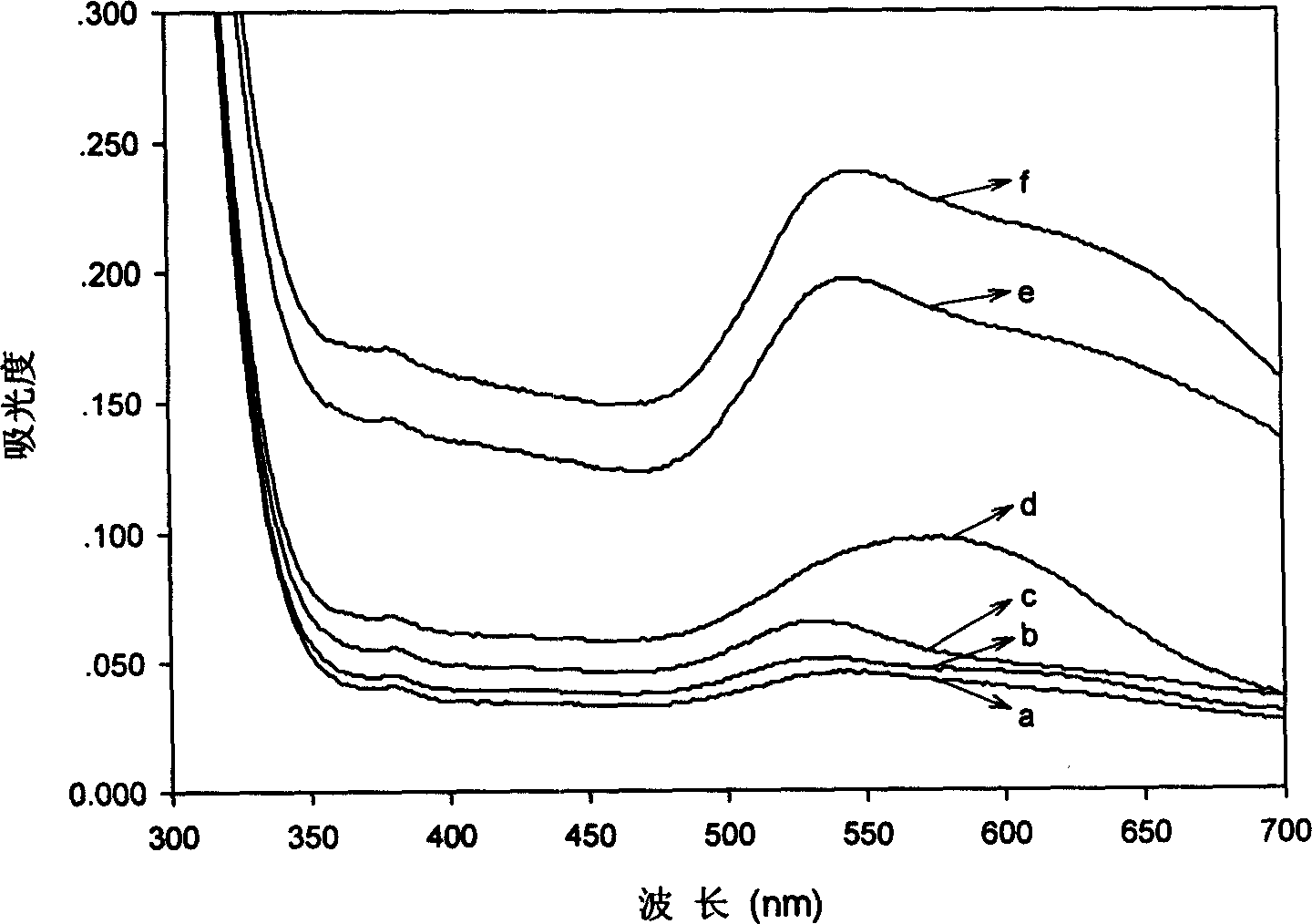Nano sensor for detecting phenolic substance and its detecting method
A nano-sensor, sensor technology, applied in biochemical equipment and methods, microbial determination/inspection, color/spectral characteristic measurement, etc., can solve the problems of high cost, complicated operation, inability to realize real-time, online measurement of microbial degradation process, etc.
- Summary
- Abstract
- Description
- Claims
- Application Information
AI Technical Summary
Problems solved by technology
Method used
Image
Examples
Embodiment Construction
[0032] 1. Strain culture
[0033] Phanerochaete chrysosporium preheated and activated for 24 hours at 30°C was inoculated into PDA medium, and cultured statically at 37°C for 4 days for the amplification of the bacteria. The spores were inoculated into 25mL Kirk liquid medium in 8 250mL Erlenmeyer flasks, and cultured statically at 37°C for 2 days. The medium in each of the 4 Erlenmeyer flasks was mixed, homogeneously stirred for 20s, poured into a 250mL Erlenmeyer flask (100mL / flask), and shaken at 28°C for 63h at a speed of 150rpm.
[0034] The culture medium was filtered to obtain the fermentation broth.
[0035] Composition of PDA medium: 40 grams of potatoes, 4 g of agar, 4 g of glucose, and 200 mL of water.
[0036] Kirk liquid medium composition: glucose 20g / L, ammonium tartrate 0.22g / L, Tween 801g / L, benzyl alcohol 0.54g / L, KH 2 PO 4 2.56g / L, MgSO 4 ·7H 2 O1.46g / L, VB1 0.001g / L, succinic acid 1.18g / L, trace element solution 70mL / L; adjust to final pH4.5 with 0.1M...
PUM
 Login to View More
Login to View More Abstract
Description
Claims
Application Information
 Login to View More
Login to View More - R&D
- Intellectual Property
- Life Sciences
- Materials
- Tech Scout
- Unparalleled Data Quality
- Higher Quality Content
- 60% Fewer Hallucinations
Browse by: Latest US Patents, China's latest patents, Technical Efficacy Thesaurus, Application Domain, Technology Topic, Popular Technical Reports.
© 2025 PatSnap. All rights reserved.Legal|Privacy policy|Modern Slavery Act Transparency Statement|Sitemap|About US| Contact US: help@patsnap.com



